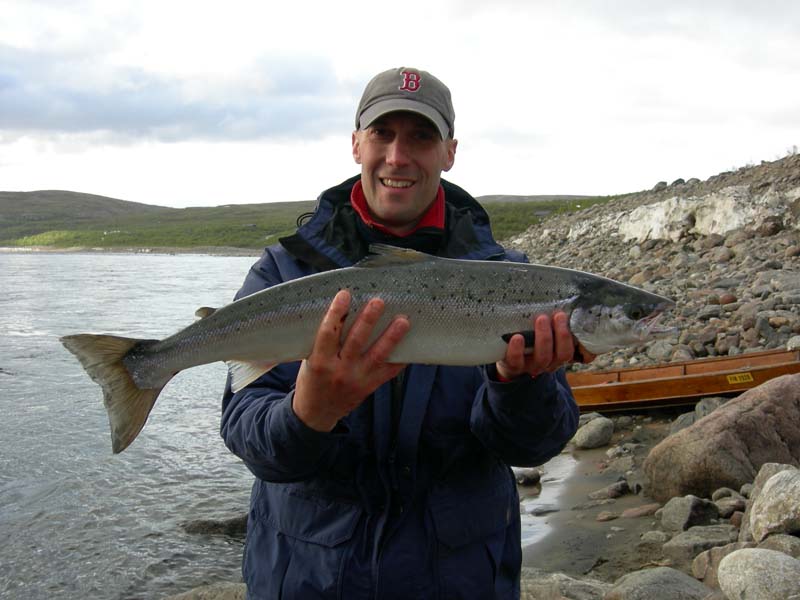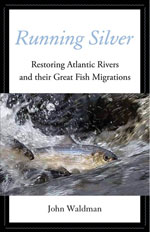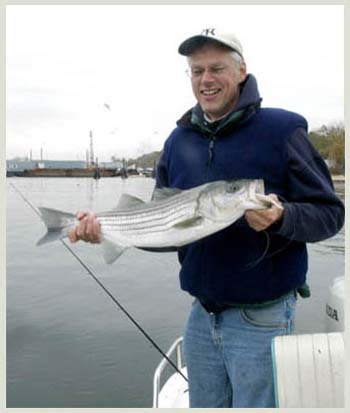by John Waldman / Hakai Magazine.com / March 7th, 2018
Fly fishers are meeting a new species in the changing waters of Canada’s Gulf of Saint Lawrence and nearby regions
[dropcap]F[/dropcap]or fly fishers, Atlantic salmon is the king of fish. It’s a dream to cast into an unspoiled river on Quebec’s Gaspé Peninsula and hook seven kilograms of silvery beauty. But in 2017, fishers all the way to Newfoundland and even in several locations in Labrador caught a startling intruder, a fish so surprising, some anglers didn’t even recognize their catch.
Why have striped bass suddenly materialized in the kingdom of the Atlantic salmon?
Striped bass—a fish that lives as far south as Florida—was long a marginal species in the cold waters of the Gulf of Saint Lawrence, sustaining small populations only in New Brunswick’s Miramichi River and Quebec’s Saint Lawrence River. But over the past decade, stripers have shown up all around the southern gulf where they had not been seen before, including in Bras d’Or Lake, Nova Scotia’s giant inland brackish sea.
The Miramichi is perhaps a bellwether of the species clash. It has long been revered as one of the world’s finest salmon rivers, where salmon coexisted with about 5,000 striped bass in the river’s lower reaches. But over the past decade, the river’s striped bass population has exploded, exceeding 300,000 spawners by 2016. Research indicated that the striped bass were eating as much as 18 percent of the river’s young out-migrating salmon. Perhaps not coincidentally, salmon numbers in the Miramichi plunged. While correlation does not prove causality, and more study is needed, this is a very smoky gun given that young salmon migrating to the sea in spring must pass through massive schools of highly predatory stripers spawning in the river’s lower reaches.
Miramichi striped bass now surge throughout the sprawling Gulf of Saint Lawrence probably because of warming waters, though some regulatory protection was awarded to the Miramichi striper stock in 2012. Not that far to the south, there is concern over the extraordinary temperature increases in the Gulf of Maine, where lobsters are threatened and new, southern fish species are being seen. But the Gulf of Saint Lawrence is also warming quickly, with portions rising more than 1 °C per decade. This alone could alter its fish community.
Surprise, surprise pink salmon arrive. Do they speak Russian?
But there is also a surprising new threat to the iconic and economically important Atlantic salmon. Last September, astonished fishermen caught several pink salmon in Labrador. Pink salmon are native to the North Pacific, where they are smaller and less commercially valuable than the four other salmon species on North America’s west coast. Pink salmon did not show up in Eastern Canada without human help—but they did arrive through a curiously circuitous path.
Since 1956, the Russian government stocked pink salmon in rivers of the distant Barents Sea. But in what is now known to be natural exploratory behavior for these freshwater-sea migrants, some fish did not return to the rivers in which they were born. Small numbers ascended rivers in Sweden, Great Britain, and Iceland. In Norway, a few populations actually established in rivers.
Having reached Labrador, it seems that pink salmon are now ranging throughout the North Atlantic, testing rivers for possible colonization.

A nice Canadian Atlantic salmon. A NOAA image.
What would it mean for rivers of the Gulf of Saint Lawrence if pink salmon established?
It is difficult to predict, but large runs could drastically alter river ecology. Individual Atlantic salmon can reproduce several times, but pink salmon die right after spawning. Nutrients from their decaying bodies enrich the river and nourish their developing young.
Atlantic salmon of Eastern Canada are experiencing other threats, including the adverse effects of dams and climate-related changes in the ocean. Now there are new pressures. For smaller rivers that support only salmon and not striped bass, predatory effects of striped bass on their salmon populations in wide open marine waters are unlikely to be a major concern. But in the tighter quarters of a river that supports both species, there is a strong chance of salmon being dominated by an increasing population of striped bass, which does not bode well for the Miramichi.
Warming of the Gulf of Saint Lawrence will not be reversed anytime soon—if ever—and with striped bass living as long as 30 years, any effects of the presently huge striper population on Atlantic salmon will persist for decades. If pink salmon colonize the Gulf of Saint Lawrence, its already stressed Atlantic salmon will face a competitor with the capacity to significantly change their riverine ecosystems, with unknown consequences.
NOTE: This article is from Hakai Magazine, an online publication about science and society in coastal ecosystems. Read more stories like this at Hakai Magazine.
Author the author
 John Waldman is a professor of biology at Queens College of the City University of New York. His focus is on aquatic conservation biology, especially the restoration of freshwater-sea fish, which he covered in his most recent book Running Silver: Restoring Atlantic Rivers and their Great Fish Migrations.
John Waldman is a professor of biology at Queens College of the City University of New York. His focus is on aquatic conservation biology, especially the restoration of freshwater-sea fish, which he covered in his most recent book Running Silver: Restoring Atlantic Rivers and their Great Fish Migrations.






